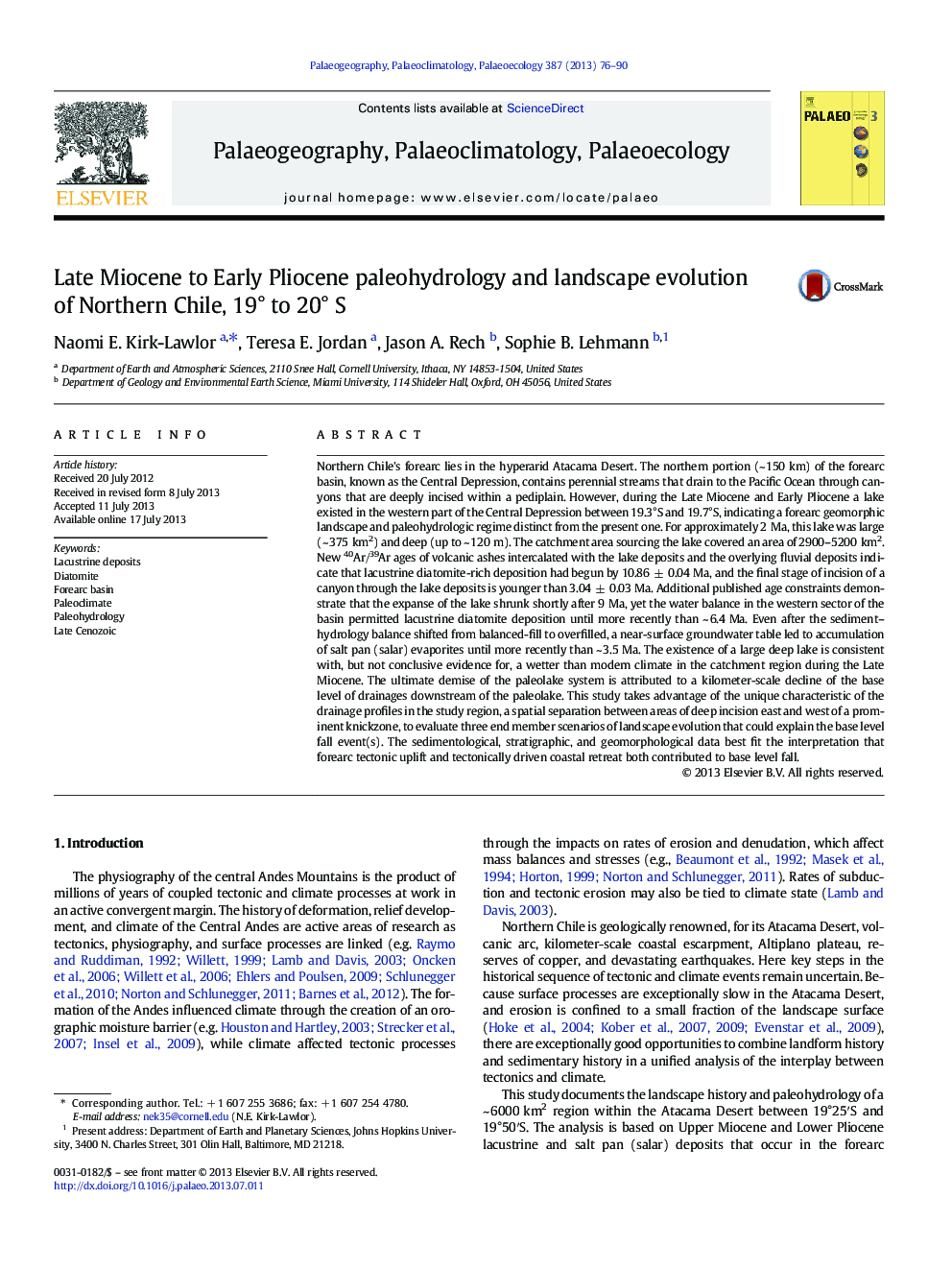| Article ID | Journal | Published Year | Pages | File Type |
|---|---|---|---|---|
| 6350185 | Palaeogeography, Palaeoclimatology, Palaeoecology | 2013 | 15 Pages |
â¢We document a perennial lake in northern Chile from ~ 10.9 to ~ 6.4 Ma at 19°S-20°S.â¢This is consistent with wetter than present climate conditions during that period.â¢We discuss the significance of the lake to the geomorphic history of canyon incision.â¢The last major incision of the forearc basin in the study region occurred after ~ 3 Ma.â¢We investigate possible causes of the regional base level fall that preceded incision.
Northern Chile's forearc lies in the hyperarid Atacama Desert. The northern portion (~ 150 km) of the forearc basin, known as the Central Depression, contains perennial streams that drain to the Pacific Ocean through canyons that are deeply incised within a pediplain. However, during the Late Miocene and Early Pliocene a lake existed in the western part of the Central Depression between 19.3°S and 19.7°S, indicating a forearc geomorphic landscape and paleohydrologic regime distinct from the present one. For approximately 2 Ma, this lake was large (~ 375 km2) and deep (up to ~ 120 m). The catchment area sourcing the lake covered an area of 2900-5200 km2. New 40Ar/39Ar ages of volcanic ashes intercalated with the lake deposits and the overlying fluvial deposits indicate that lacustrine diatomite-rich deposition had begun by 10.86 ± 0.04 Ma, and the final stage of incision of a canyon through the lake deposits is younger than 3.04 ± 0.03 Ma. Additional published age constraints demonstrate that the expanse of the lake shrunk shortly after 9 Ma, yet the water balance in the western sector of the basin permitted lacustrine diatomite deposition until more recently than ~ 6.4 Ma. Even after the sediment-hydrology balance shifted from balanced-fill to overfilled, a near-surface groundwater table led to accumulation of salt pan (salar) evaporites until more recently than ~ 3.5 Ma. The existence of a large deep lake is consistent with, but not conclusive evidence for, a wetter than modern climate in the catchment region during the Late Miocene. The ultimate demise of the paleolake system is attributed to a kilometer-scale decline of the base level of drainages downstream of the paleolake. This study takes advantage of the unique characteristic of the drainage profiles in the study region, a spatial separation between areas of deep incision east and west of a prominent knickzone, to evaluate three end member scenarios of landscape evolution that could explain the base level fall event(s). The sedimentological, stratigraphic, and geomorphological data best fit the interpretation that forearc tectonic uplift and tectonically driven coastal retreat both contributed to base level fall.
